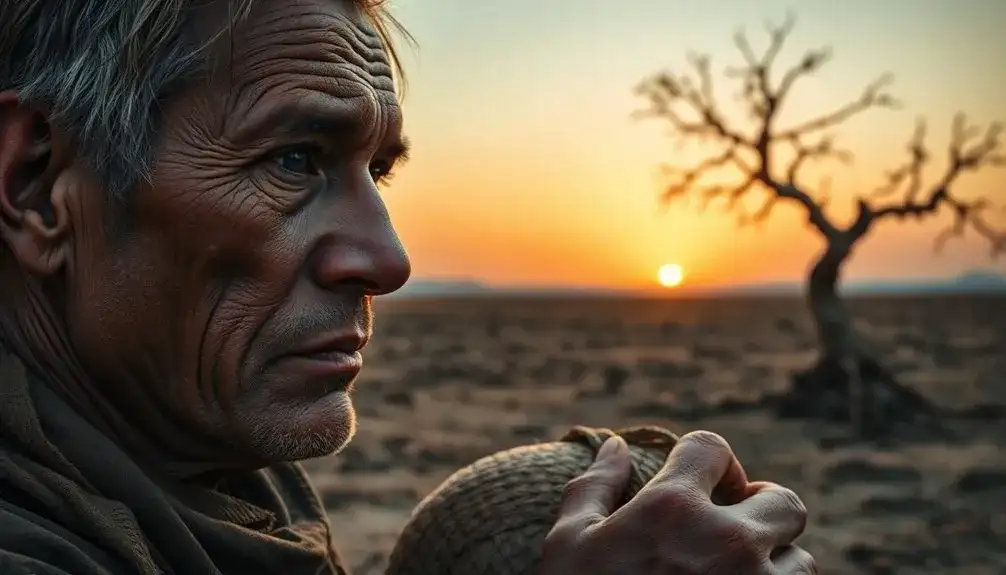Introduction
John Steinbeck’s The Grapes of Wrath is more than a story of a family during the Dust Bowl. It is a masterwork of literature that intertwines vivid characters, social critique, and philosophical reflection to paint a haunting picture of American hardship. Through the Joad family’s journey from Oklahoma to California during the Great Depression, Steinbeck explores the systemic issues that plagued—and continue to plague—American society. This expansive novel reveals the human cost of economic collapse and environmental disaster while celebrating the strength of community, the resilience of individuals, and the need for empathy and collective action.
Chapter 1: The Novel’s Thematic Landscape

The Grapes of Wrath unfolds with the Joad family’s forced migration due to the ecological and economic devastation of the Dust Bowl. They leave their desolate Oklahoma farm, driven by hope for opportunity in California. However, what they encounter is a system that exploits and dehumanizes them.
Key themes explored in the novel include:
- Displacement and Migration: The Joads’ journey represents thousands of families forced to abandon their homes.
- Community vs. Individualism: Steinbeck contrasts the selfishness of big landowners with the solidarity among migrant families.
- Injustice and Resistance: The systemic exploitation faced by migrant workers is a recurring motif.
- Hope and Despair: Despite immense suffering, characters like Ma Joad and Jim Casy demonstrate unwavering hope.
These themes resonate with readers facing modern economic inequality, environmental displacement, and social unrest.
Chapter 2: John Steinbeck—A Writer with a Purpose
To fully grasp the depth of The Grapes of Wrath, understanding Steinbeck’s background is essential. Born in Salinas, California, in 1902, Steinbeck grew up surrounded by the agricultural industry. His experiences as a laborer during the Great Depression deeply shaped his empathy for the working class.
His dedication to social justice is reflected in:
- 33 Published Works: Including Of Mice and Men and East of Eden.
- Pulitzer Prize for Fiction: Awarded in 1940 for The Grapes of Wrath.
- Nobel Prize in Literature (1962): For his realistic and imaginative writings.
Steinbeck’s commitment to documenting the struggles of the marginalized made his work an essential part of American literary history.
Chapter 3: The Historical Context—Dust, Despair, and the American Dream

Set in the 1930s, The Grapes of Wrath reflects the Dust Bowl’s catastrophic environmental consequences and the economic collapse of the Great Depression. Over 250,000 people migrated to California during this period.
Steinbeck’s depiction is drawn from real-life experiences and observations, as he traveled among migrant workers and listened to their stories.
His narrative includes:
- Bank Foreclosures: Families forced off their land by economic institutions.
- Corporate Agriculture: Farms replaced by mechanized systems that valued profit over people.
- Labor Camps: Inhumane conditions and exploitative wages.
These depictions serve as both documentation and condemnation of the era’s injustices.
Chapter 4: The Characters—Voices of a Generation
Steinbeck’s characters are not merely fictional; they are emblematic of broader societal issues.
Tom Joad
Recently released from prison, Tom evolves from a self-focused individual into a socially aware leader. His transformation illustrates the novel’s core message: awareness leads to action.
Ma Joad
The spiritual and emotional anchor of the family, Ma Joad exemplifies the resilience of motherhood. Her refusal to break under pressure serves as a testament to human strength.
Jim Casy
A former preacher turned labor organizer, Casy’s Christ-like figure sacrifices himself for the greater good. His belief that “maybe all men got one big soul” is the novel’s philosophical heart.
Chapter 5: Literary Techniques—Style That Speaks to the Soul
Steinbeck’s stylistic choices elevate his social commentary:
- Intercalary Chapters: Short chapters offering a macro-view of social and economic issues.
- Symbolism: The turtle, Route 66, and the “grapes of wrath” all symbolize persistence, transition, and impending revolt.
- Realistic Dialogue: Captures the regional dialect and emotional tenor of the times.
- Vivid Imagery: Brings the Dust Bowl’s barren landscapes and bustling migrant camps to life.
His technique fuses journalistic realism with poetic intensity, allowing readers to feel rather than just observe the characters’ experiences.
Chapter 6: The Joad Family’s Journey—A Microcosm of Migration

The trek from Oklahoma to California is fraught with hardship. The family loses members, struggles to find work, and confronts prejudice and exploitation.
Their journey encapsulates:
- Loss and Grief: From Grandpa Joad’s death to Rose of Sharon’s stillborn baby.
- Societal Indifference: Law enforcement and landowners treat migrants as threats.
- Moments of Solidarity: Shared meals, makeshift communities, and small acts of kindness.
Despite their descent into poverty, the Joads never lose their humanity. Their journey becomes a metaphor for the endurance of hope.
Chapter 7: Social Commentary—Then and Now
The Grapes of Wrath offers piercing social critique that remains relevant:
- Economic Inequality: Wealth disparity is a central concern in both the 1930s and today.
- Environmental Catastrophe: The Dust Bowl parallels current climate migration.
- Labor Rights: The exploitation of workers continues in many industries.
Steinbeck’s call for empathy and collective action is more than historical—it’s a moral imperative. The “grapes of wrath” are not just anger; they are potential catalysts for change.
Chapter 8: Reader Impact—Empathy and Awareness
Steinbeck’s characters evoke a visceral reaction from readers:
- Empathy: You feel the desperation of a hungry child, the sorrow of a grieving mother.
- Reflection: The book invites introspection about privilege, fairness, and responsibility.
- Activism: It has inspired generations to advocate for workers’ rights and social reforms.
Whether read in high school classrooms or book clubs, the emotional force of The Grapes of Wrath lingers.
Chapter 9: The Legacy—An Enduring Literary and Cultural Force
The impact of The Grapes of Wrath is immense:
- Over 100 Million Copies Sold
- Adapted into a 1940 Film Directed by John Ford
- Cited in Political and Labor Movements
Its influence permeates American culture, from literature to activism. Steinbeck’s timeless message continues to inspire resistance against injustice.
Conclusion
The Grapes of Wrath is not just a novel; it is a lens through which we view the past and interrogate the present. With poetic prose and unflinching honesty, Steinbeck reminds us that human dignity persists even under the weight of oppression. The Joad family’s resilience embodies the enduring power of hope and collective strength.
In a world still grappling with inequality, displacement, and social strife, The Grapes of Wrath remains a clarion call for empathy, justice, and solidarity.
Let this story inspire you not only to reflect—but to act.



